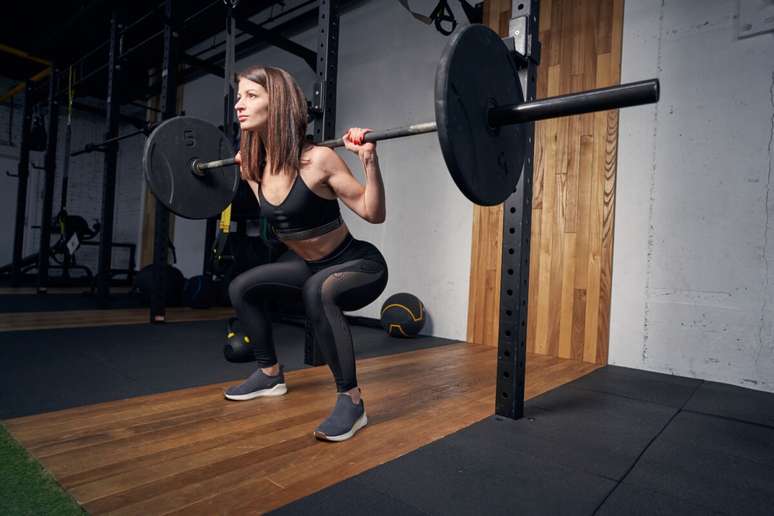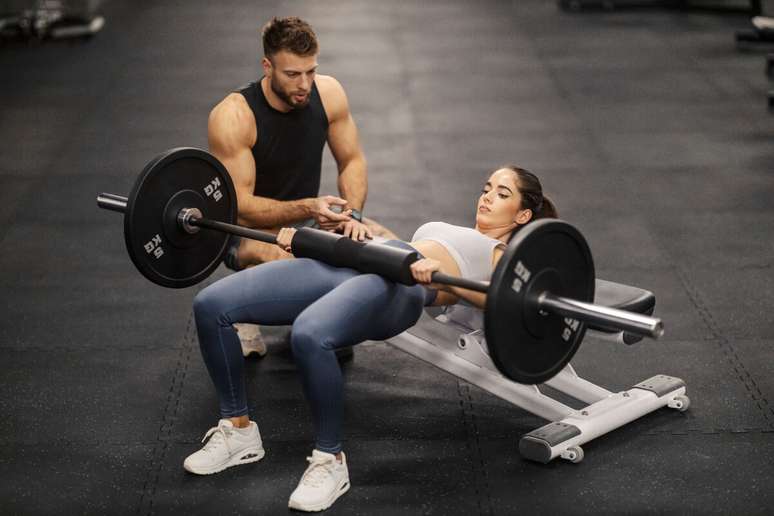The personal trainer indicates safe strategies to perform bodybuilding exercises and avoid injuries
The desire to earn muscles can induce many people to believe that the more weight it is better. However, Kristina Schmidt’s experience shows that this logic has its risks. The physical form for 24 years has undergone a hip fracture while trying to perform pelvic elevation of 140 kg without the right technique. The result? Intense pain, removal of training and a warning on the importance of the correct execution of the exercises. If the goal is muscle growth, knowing how to balance the load, volume and execution are essential to avoid injuries and guarantee continuous evolution.
Is there an ideal load?
According to the Personal Trainer And the physical educator Tauan Gomes, there is no “ideal load” for weight, but it is possible to find it safely. “Rather, it is important to differentiate the workload from the workload. In the heating, the attention is to prepare the body, activate the Joints And the movement safely using more repetitions and less intensity.
Now, when it comes to workload, “the weight should be adjusted to allow between 8 and 12 repetitions, the last 2 or 3 should request an effort, respecting the rest guidelines between series, speed of movement and amplitude. If The exercise is easy to complete within this parameter, the weight must be gradually adjusted.

The overload causes possible injuries
According to professional overload, unpaid can lead to serious injuries. “The formation of bodybuilding It is not limited to the increase in loads; There are several ways to stimulate mass gain without overweight. If you only were raising goods, for example any heavy worker would have approved the muscles. In addition to hypertrophy, training strengthens the bones and joints, fights sarcopenia and improves the quality of life, “says Tauan Gomes.
The professional warns that “forcing the body beyond what is prepared, asking for too much the body without a correct preparation, endangers the integrity of joints, bones and muscles. The result can be a lesion that leaves you to train for months or It even requires surgery “.
Supervision and technique are fundamental
It is not the weight that determines the success of training, but the quality of the execution of the movements. “Even if the person can erect high loads, without technique the risk of injuries is high, so it is essential to have an accompanying professional, regulate the posture and guide the progression of the load,” underlines Tauan.
The boundary between harmful productive effort and overload is thin and knowing how to recognize the boundaries of the body makes the difference. “Malaise The light is normal, but acute and constant pain is a warning sign. In such cases, the ideal is to stop training and seek an evaluation of experts to avoid injuries that can compromise the continuity and evolution of training “, concludes Tauan.
By Tayanne Silva
Source: Terra
Ben Stock is a lifestyle journalist and author at Gossipify. He writes about topics such as health, wellness, travel, food and home decor. He provides practical advice and inspiration to improve well-being, keeps readers up to date with latest lifestyle news and trends, known for his engaging writing style, in-depth analysis and unique perspectives.









